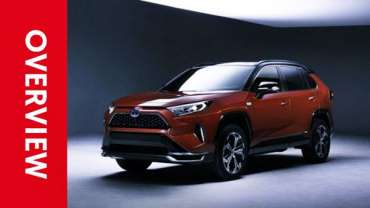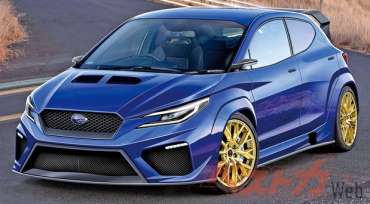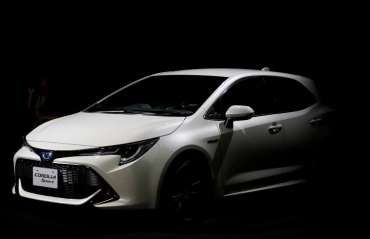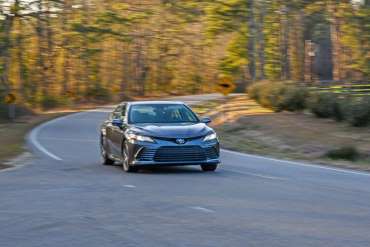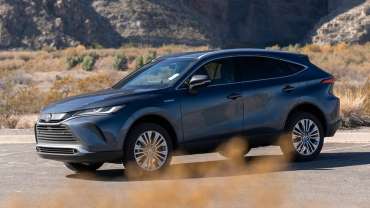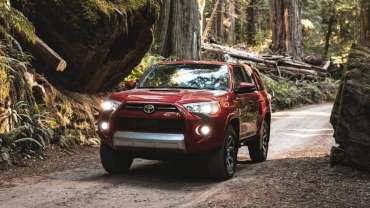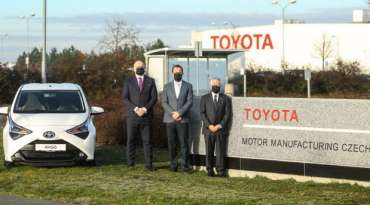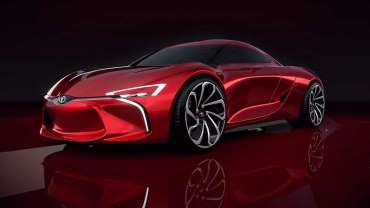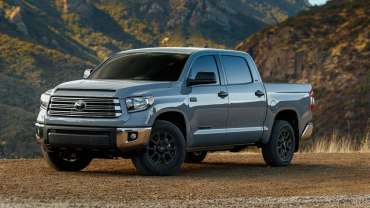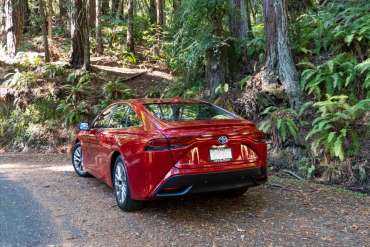Displaying items by tag: Toyota
Toyota Rav4 2023 Hybrid Reviews
The Toyota Rav4 is one of the legendary cars of Toyota. First launched in 1994, the Toyota Rav4 is still being developed today. Recently Toyota has released its latest generation new Toyota Rav4 2023, After sliding first in Japan and the United States, the latest generation Toyota RAV4 began to be marketed in Southeast Asian countries.
Updates occurred on each side of the 2023 Toyota Rav4, ranging from engines to safety features. In general, whatever is in the latest Generation Toyota Rav4 cars is the latest innovation in the automotive industry today. For example, the Hill Assist Control safety feature, this feature will be very useful in the brake system that holds the vehicle for a few seconds so as not to move backward when moving the foot from the brake pedal to the gas pedal, with an HSA, helping the driver not to panic when the vehicle moves backward when on the ramp.
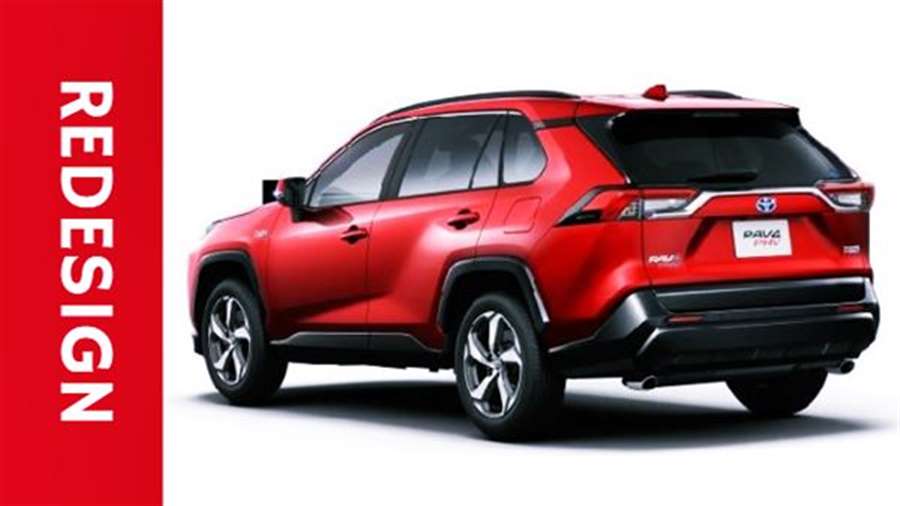
Toyota Rav4 2023 Interior Design
This feature can also be activated or manually disabled by the driver. Generally, there is a button with an image icon of the car that is tilted, and underneath there is a diagonal line that represents the climb. and many others.
Changes can also be felt in the Cabin section of the New Toyota RAV4 2023, the interior design is built very well and equipped with a variety of interesting features that are in it, in terms of interior design looks the latest generation Toyota Rav4 prefers practicality over style. The cabin space is more spacious for storing small cargo, and all the buttons and controls are easy to find and operate. The latest generation 2023 Toyota Rav4 provides many conveniences at the basic level, such as dual-zone automatic climate control, tilt steering wheel, and telescope.
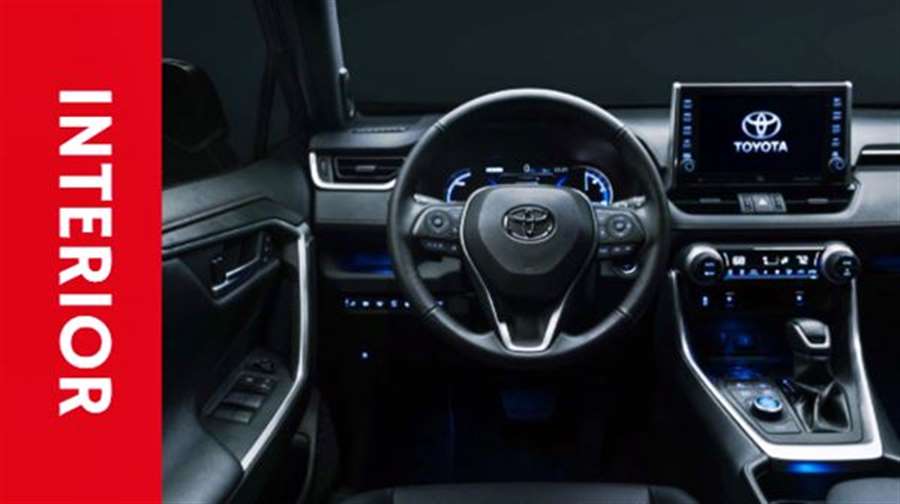
Toyota Rav4 2023 Interior Design
Toyota Rav4 2023 Infotainment
Not much change in the Infotainment section that we get, the latest generation of Toyota Rav4 still comes with a 9.0-inch infotainment screen that emerges from its dashboard and is equipped with multimedia features that Integration Apple CarPlay and Android Auto, as well as onboard Wi-Fi hotspots, are all standard. JBL 11-speaker navigation and stereo systems are available.
Toyota Rav4 2023 Safety Features
currently, we have not obtained the results of safety tests on the latest generation of New Toyota Rav4 2023, but if we refer to the previous generation that has been released by the National Highway Traffic Safety Administration (NHTSA) and the Insurance Institute for Highway Safety (IIHS) has given good value to the RAV4 for accident feasibility. Toyota has been an aggressive adopter of driver assistance features and offers many of those features standard throughout the RAV4 range. we hope for the latest model of the rav4 can get better value than previous generations.
Toyota Rav4 2023 Engine Performance
For its own engine, 2023 All New Toyota Rav4 is equipped with a 2.5-liter four-cylinder engine aided by two electric motors for a combined output of 219 horsepower, this stops a time of 7.4 seconds 60-mph. This model has also been equipped with the best safety system to reduce the risk of collision.
Subaru is preparing a new hot hatch
Some media write that Subaru, in cooperation with Toyota, is preparing a hot hach model with 4x4 drive, with the possibility that the car could also serve as a base for a rally vehicle.
This project is reportedly run under the Super AWD label, while the premiere of the car should be in the fall of 2022.
Apparently, this will not only be a hatchback version of the new generation sports Subaru WRX (which is expected at the same time), but will be below it in the range of the Japanese brand (although these two models will be similar in size).
Both the new hot hatch and the future WRX should have a 2.4-liter turbo gasoline engine, noting that the hot hatch will have less power than the new WRX.
Toyota sold the most cars in 2020, overtaking Volkswagen
Toyota sold the most cars in 2020 and overtook Volkswagen from the first place in the world ranking list, it was announced at the headquarters of the Japanese company in Tokyo.
Last year, Toyota sold 9.528 million cars worldwide, which is 11.3 percent less than in 2019, but it still overtook Volkswagen, because the German manufacturer sold 9.305 million cars, which is a drop of 15.2 percent, Reuters reported.
Last year, due to the coronavirus pandemic, sales of new cars were significantly reduced in all countries, and Toyota coped with it somewhat better because Asia coped much better with the pandemic than Europe and especially the United States.
Toyota states that they achieved better results than the competition, partly due to the larger offer of increasingly sought-after electric cars. Of the 9.528 million vehicles sold in 2020, 23 percent were electric, which is three percent more than in 2019.
2021 Toyota Camry Goes All-Wheel Drive (Again)
Introduced halfway through the 2020 model year, the Toyota Camry's all-wheel-drive option makes a return after a 29-year hiatus.
The late 1980s were a halcyon era for all-wheel-drive cars. Mitsubishi made all-wheel-drive Galants, Honda had the Civic Real Time 4WD, Pontiac introduced the 6000 STE AWD, and Ford offered an all-wheel-drive Tempo. The period gave us various AWD Subarus and Audis, the BMW 325xi, and Mercedes-Benz's 4Matic system. Toyota even built an all-wheel-drive Camry, the All-Trac, from 1988 to 1991. Then the SUV craze took off, everyone bought a Ford Explorer, and all-wheel-drive cars went back to being freaky things for rally-racing fans and rich Vermonters.
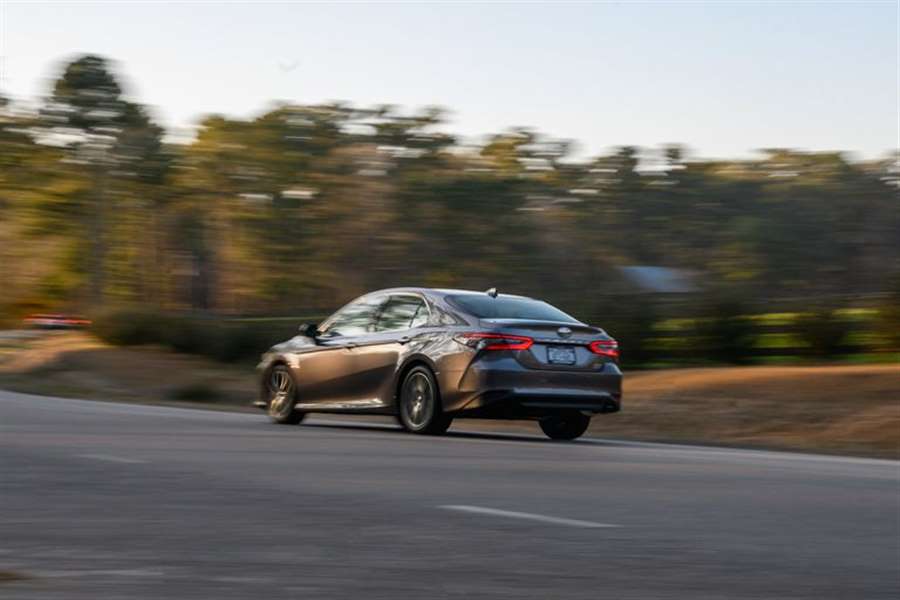
Okay, we're oversimplifying. But if SUVs and crossovers killed the mainstream all-wheel-drive sedan, we can also argue that they're the proximate cause of its current minor renaissance, since carmakers want to give their sedans a fighting chance in showrooms bursting with new utility vehicles. So, Toyota's AWD Camry has returned, this time less because of direct all-wheel-drive competition (Subaru Legacy, Nissan Altima) than to fight the more general adversary known as "all crossovers."
Toyota introduced all-wheel drive as a midyear addition to the 2020 Camry lineup, and it went into production at the company's factory in Kentucky last March. Considering what else was ramping up last March, you'll be forgiven for missing that news. Toyota figures 15 percent of Camry buyers will choose the all-wheel-drive option—which is limited to the North American market—but we predict that only a tiny subset of those will add their own All-Trac badges. That's too bad. As it stands, a subtle AWD emblem on the trunk is the only giveaway that your Camry is packing more than one differential.
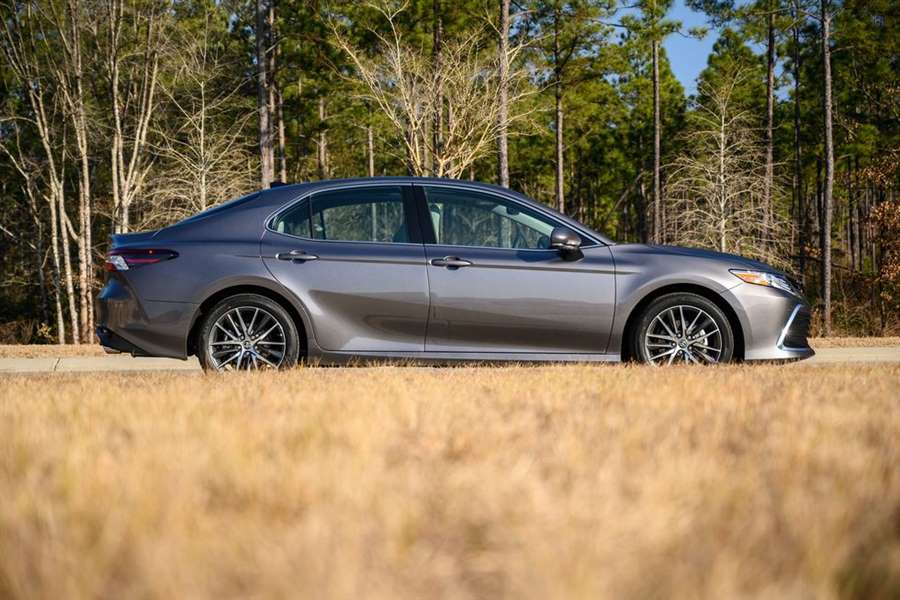
Unless, that is, you jack up the car, which we did to take a peek at that rear diff. The complete system adds roughly a claimed 165 pounds yet makes no impingement on trunk space. The rear seats lose 0.4 inch of headroom, and overall passenger volume declines by less than a cubic foot, both of which are metrics that fall under the heading of "not so you'd notice." Oddly, all-wheel-drive Camrys have a wider turning circle (39.3 feet versus 38.0 for front-drivers) because of a slightly wider rear track and different suspension geometry.
The rear-axle hardware also crowds the exhaust system a bit, resulting in the all-wheel-drive models making one horsepower fewer than their front-drive siblings. We suspect that, in a drag race, the weight penalty will make a bigger difference than the single-pony deficit.
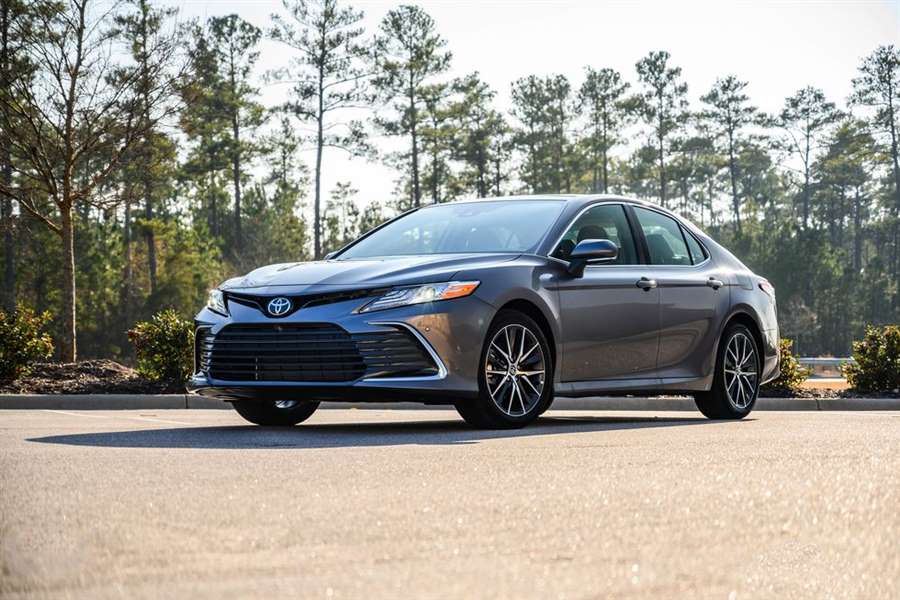
Indeed, the Camry's AWD option is available on every four-cylinder trim level, including the sportier XSE. It's not available with the optional V-6 or hybrid powertrains, presumably because if that's what you're after, Toyota would rather sell you a RAV4 or a Highlander. The naturally aspirated 2.5-liter four is reasonably powerful—202 horsepower in most trims, 205 in the XSE, which has dual exhaust outlets—if rather coarse at high rpm. At least it's hooked to an eight-speed automatic transmission, as opposed to the continuously variable transmissions found in the Camry's competitors from Nissan and Subaru. Decisive upshifts and quick downshifts add some satisfaction to the AWD Camry driving experience, although the word "fun" doesn't quite apply. A TRD hot rod this is not.
In fact, in normal operation, the all-wheel-drive Camry behaves like a front-drive model with some junk under the trunk, disengaging the rear axle via an electromagnetic coupling. When the front wheels slip (or when accelerating from a stop) the rear end shows up for work, deploying a maximum of 50 percent of the engine's available torque to the back. We didn't get a chance to test the system in snow, but on dirt the Camry hooked up and launched after a momentary hint of wheelspin from the front. Traction overrules horsepower, quickly and decisively, which is the point. This wouldn't be a great car for spinning donuts in an empty parking lot, but it should excel on sloppy winter roads.
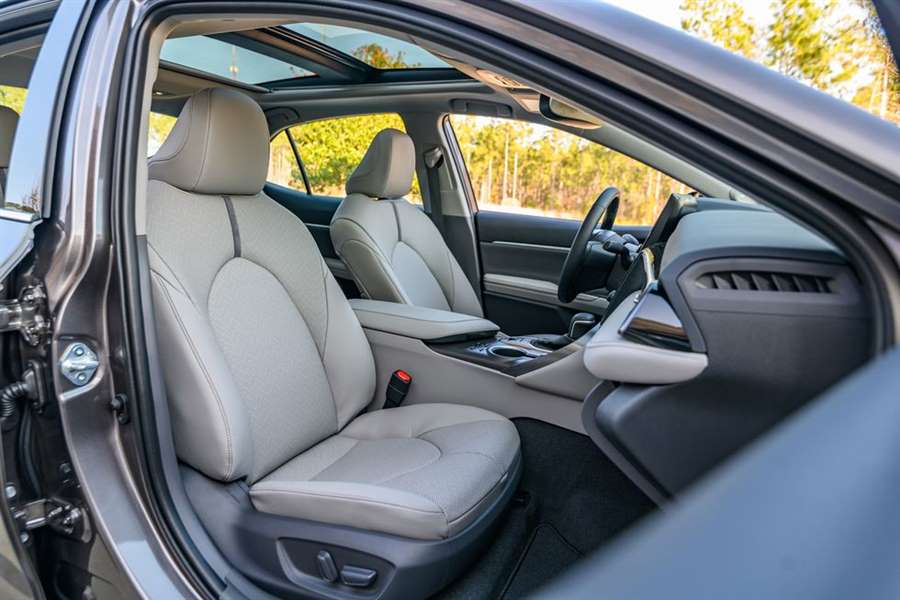
And it's a good buy. At $1400, the all-wheel-drive option doesn't cost much more than a nice set of mounted winter tires. It does exact an ongoing penalty in running costs, though, since the added weight and drag of the system drops the Camry's EPA combined estimate by 3 mpg versus comparable front-wheel-drive models. For the XLE example we drove, the EPA highway rating fell from 38 to 34 mpg, despite the Camry's ability to disconnect its rear axle. Given that Toyota stole some packaging space for the all-wheel-drive system by fitting a smaller fuel tank (14.4 gallons, down from 15.8), the Camry AWD will be visiting gas stations considerably more frequently than its front-drive counterpart.
Taken together, this amounts to a bunch of small drawbacks that you'd forget all about the moment you power up a steep hill in six inches of powder. If that's something you ever need to do in a family sedan, maybe take some inspiration from the all-weather cars of the '80s. You can't buy a new Pontiac 6000 STE, but the all-wheel-drive Toyota Camry is back.
Source: caranddriver.com
How Comfortable Is the 2021 Toyota Venza? We Road-Tripped for 4,000+ Miles
From Los Angeles to Houston and back.
I wrapped up 2020 the same way I started it, with a cross-country trip from Los Angeles to Houston. Last year I drove our long-term Volvo S60 to visit my family during the holidays and had such a great time that I decided to repeat it (and who knows, maybe it will become a tradition). This time, my chariot was our 2021 Toyota Venza—the hybrid-only SUV that serves as an alternative in Toyota's SUV lineup to the off-road-looking RAV4. I've chaperoned the Venza since October, but this was the first time I took it on a long road trip, and overall it excelled at its job. Instead of opting for the direct route, I went via the scenic way.
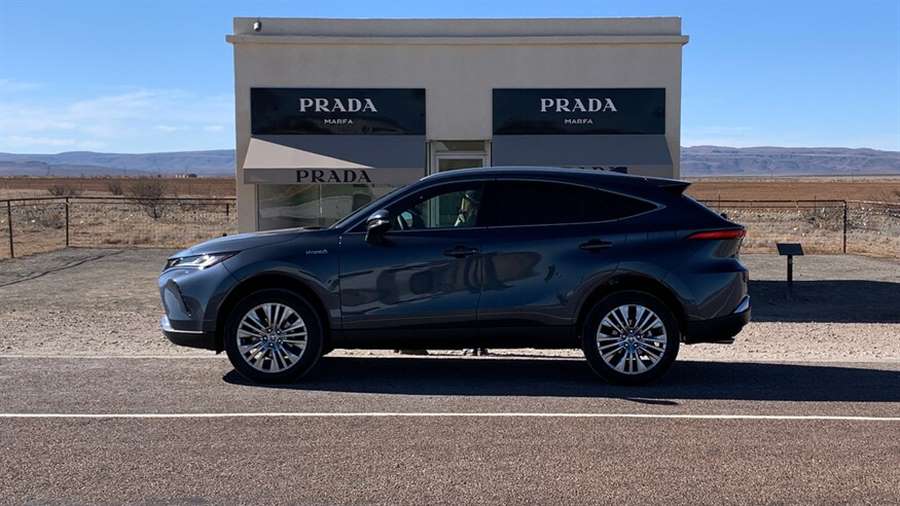
My road trip started before 5 a.m. when I left Playa del Rey and headed south to San Diego, where I then took I-8 to Tucson. Instead of taking the direct and boring way on the I-10, I opted for the more scenic route, driving through the Cuyamaca Mountains, the Imperial Sand Dunes and along the All-American Canal before ending on the I-10 between Phoenix and Tucson. After a quick lunch stop in Tucson, I continued onto El Paso, Texas, where I spent the first night. In total, I traversed 853 miles and averaged 33.5 mpg, according to the Venza's computer.
After 11 hours of driving, I found the seats very comfortable, providing great back and thigh support. The optional SofTex package—which includes leatherette seats, heated, ventilated, and powered front seats, and heated steering wheel—felt worth it. Crossing the desert in the winter means cold and hot temperatures throughout the day, so I used both the heating and ventilation often.
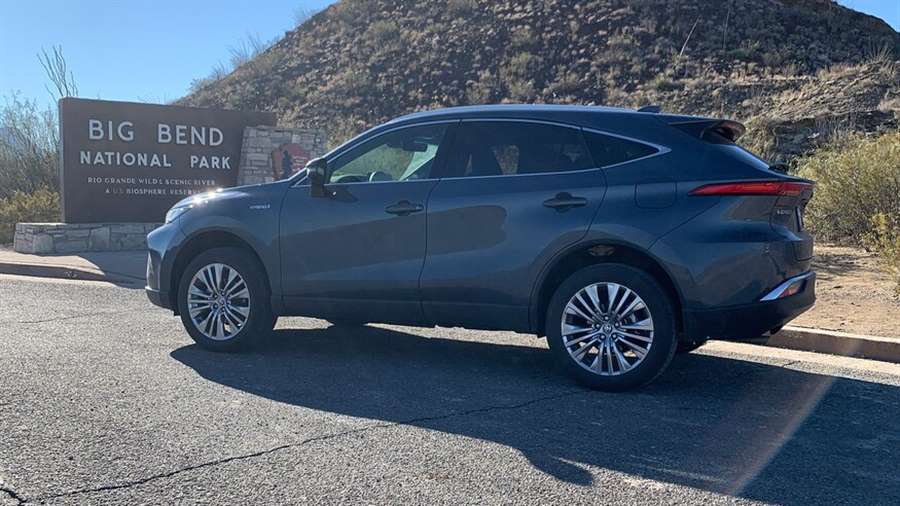
On day two I stopped in in Marfa, Texas, a town in the middle of the Chihuahuan Desert with chic shops and art galleries that will make you think you're on Abbott Kinney Blvd in Venice, California, or somewhere in Brooklyn. During a quick stop in the town of Valentine I visited the famous Prada sculpture that artists Elmgreen and Dragset permanently installed in the middle of the desert—a taste of what Marfa is really all about.
Highway 90 connects the desert cities of Marfa, Alpine, and Marathon in West Texas, and continues along the Rio Grande bordering Mexico. The drive is way more entertaining than I-10, with hills, river crossings, and swoopy corners at times. Border Patrol agents are seen almost every 15 minutes, and with a speed limit of 75 mph, this two-lane highway is captivating to drive. The Venza produces a good amount of tire noise, and the cabin was loud when we drove over harsh pavement, but the ride was always settled. With the 2.5-liter l-4 engine and three electric motors mated to a CVT, the Venza feels adequately powered, but it lacks the punchiness of turbo-four engines or thirsty V-6s of other SUVs in the segment.
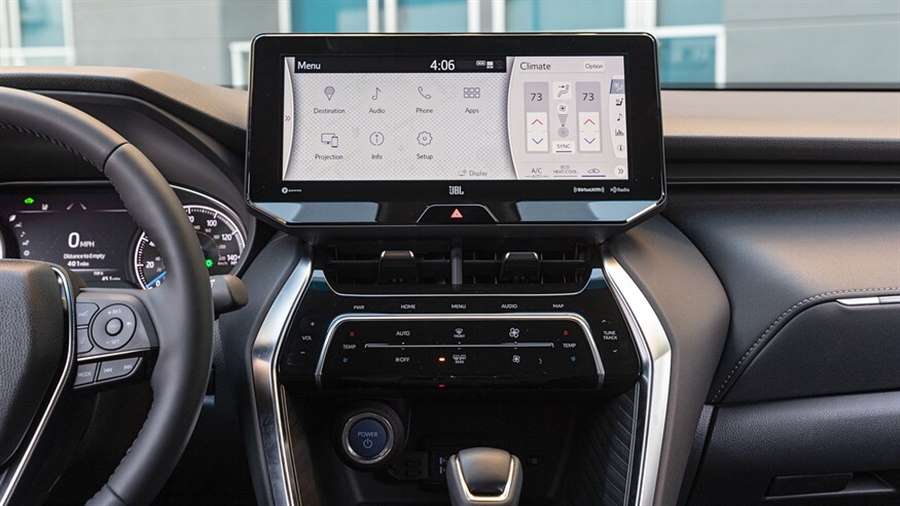
After a night stop in Del Rio, Texas, I headed north to the quaint town of Fredericksburg. Known for its wineries and German heritage, there's a cozy feeling walking on its sidewalks and seeing the historic Vereins-Kirche building. Nestled in the heart of the Texas Hill Country, Fredericksburg is home to many great roads and vistas. There's no doubt that central Texas was blessed with a fantastic landscape.
I arrived to Houston after driving 1,726 miles over three days, averaging 34.2 mpg. I confess I was getting tired toward the end of the road trip, but visiting all of these great places gave me a taste of Texas that I had not savored before despite having lived eight years in the Lone Star state.
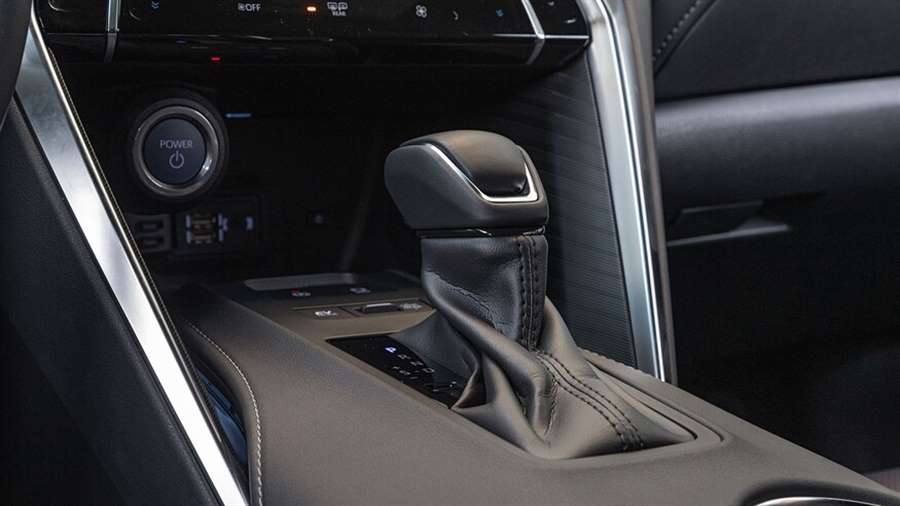
With my brother tagging along on the way back, the drive was more enjoyable. Our first stop was Big Bend National Park, but before we got to our hotel in Alpine, a massive winter storm dropped over 24 inches of snow in some parts of the state, making the roads icy and dangerous. On our drive to Alpine, we saw ice and snow on the road, but we made it to the hotel without any issues. Thankfully, the Venza comes with standard all-wheel drive, which was very useful during this part of the trip.
Big Bend National Park provides some of the most stunning vistas I've seen in my life. The Santa Elena Canyon's enormous walls are split by the Rio Grande, creating a natural division between Mexico and the U.S. Because the park also got a lot of snow, the basin, which is home to many trails, campgrounds, and a lodge, was closed. So we headed west to Big Bend Ranch State Park, taking FM 170, which follows the Rio Grande. With cliffs and hills on both sides of the border, the views were breathtaking, and the twisty turns made this road quite fun. I was most impressed with the landscape in this part of Texas—it seems like a well-kept secret compared to other places in the country. Note to self: Come back with a truck and off-road equipment; there's plenty of trails to experience.
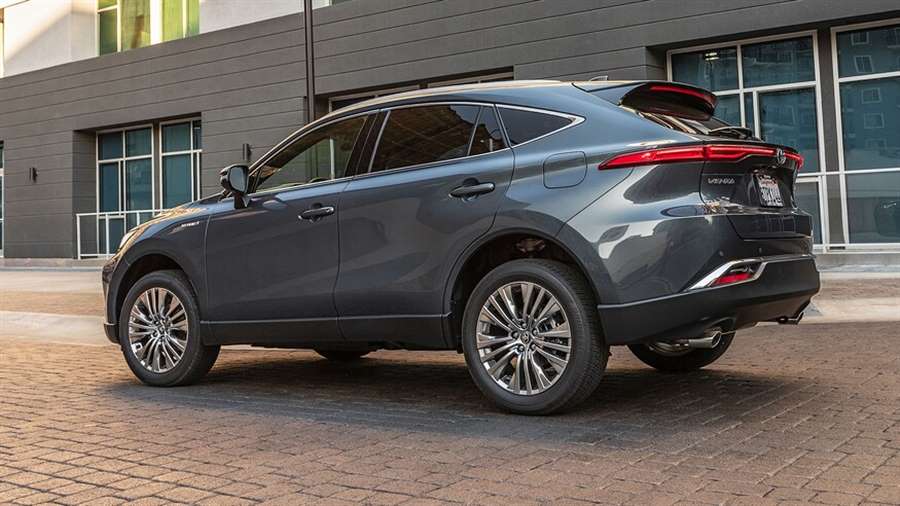
The next day we left Alpine for Tucson. We stopped at El Paso for lunch and noticed how close Ciudad Juarez really is from its northern sister city, as we got a panoramic view of it driving on I-10.
Sitting in the front passenger seat, my brother had quite a bit of trouble with the capacitive touch buttons on the center console. He'd confuse the temperature controls for the radio tuning controls and often hit the wrong button given that they are very touch-sensitive. One of the Venza's weakest points is interior space. Despite being positioned between the RAV4 and the Highlander, it has less space than even its smaller sibling. That was especially notable on the return trip when we were carrying two large suitcases, a bag of golf clubs, and a couple of biggish boxes. Even with the rear seats folded, cargo space is limited.
After a mostly boring drive, dozens of songs, and a couple of podcasts, we were happy to stop in Arizona for the night.
An early wake-up call had us on the road by 7:30, and we continued our way west on I-8. After our visit to White Sands National Park last year, we decided to visit the Imperial Sand Dunes in California for a Sahara-like experience. Although it's not nearly as impressive as the African desert, the scenery is beautiful, and it served as our last stop before we ended our trip.
With 4,020 miles added to the odometer, the Venza proved itself to be a comfortable and efficient SUV. At 33.2 mpg on average, that's a bit under the EPA's ratings, but weather and high speed limits are to blame. There will be more road trips with the Venza, and this one was a great start.
Photos of the road trip are courtesy of Andrés Cortina.
Source: motortrend.com
What Will the 2023 Toyota 4Runner Have to Offer?
Since 1984, the Toyota 4Runner has made its mark in our lineup as a powerhouse SUV. It’s getting close to having a cult following because of its versatility with its on and off-road capabilities. This is what makes it a great option for any driver, not just those that like to take their adventure off the pavement. Anyhow, at Toyota of N Charlotte, it’s safe to say we’re BIG fans of the Toyota 4Runner, and we’re eager to announce that the ever popular SUV will be redesigned in 2023. Take a look at the details on what to expect from this new Toyota.
What Will the New Toyota 4Runner Bring to the Table?
The current N Charlotte Toyota 4Runner model has a 4.0L V6 engine with Dual Independent Valve Timing. Rumor has it that the 2023 model will offer more than just one engine option. Even though many fans are into the current configuration, adding a couple of options can increase the horsepower, torque, fuel efficiency, and overall create a more versatile SUV than what it already is! A turbocharged option could also be in the works—this will definitely bring an amazing drive time.
It’s possible that a hybrid option for the new Toyota 4Runner model will be in the works as well. As a company committed to going green, mixing this with a popular N Charlotte model is just the right move for the company. Not only does a hybrid model offer better fuel efficiency, it also offers an eco-friendly performance with fewer emissions.
As for looks, the current N Charlotte Toyota 4Runner has a muscular design along with defined lines and features that are out of this world. For a new Toyota 4Runner redesign, the anticipation is getting fans anxious because they know that when Toyota redesigns a model, it’s a drastic change. Our guess is that parts like the back end, front grille, lighting schemes, etc., will see changes. Other accessories like tow kits and roof baskets could even become standard. Thus, there’s reason to believe that the 2023 model will look different.
If an exterior overhaul is added, then changes in the interior would also be necessary. We predict new options are coming in for interior trim materials and fabrics, as well as more space with better distribution. Infotainment, safety, efficiency, and convenience features are predicted to be be added for a better drive time!
Test Drive the N Charlotte Toyota 4Runner Today!
We’ve obviously been very eager for the arrival of the 2023 Toyota 4Runner, but for now were going to in the moment and appreciate the current model of the 4Runner. Test drive the 2021 4Runner or any other new Toyota on our lot. You can get the feel of driving on of our renowned new Toyotas. Make your way to Toyota of N Charlotte today! We’re located at 13429 Statesville Rd just off I-77 at exit 23 in Huntersville. You can also call us to schedule an appointment at (704)875-9199.
Source: toyotaofnorthcharlotte.com
Toyota has taken over ownership of the Kolin plant in the Czech Republic
Toyota has officially taken over the TPCA factory, which it founded in 2002 in the Czech Republic together with the French PSA group, and which produces the Toyota Aygo, Peugeot 108 and Citroen C1.
The factory is now called Toyota Motor Manufacturing Czech Republic (TMMCZ), and as it is stated, the mentioned French relatives will be made in addition to Toyota Aygo for some time to come. As things stand now, the 108 and C1 will not get a direct successor, while Toyota will introduce a new generation of Aygo models by the end of the year.
The factory has a capacity of about 300,000 vehicles a year, and according to the statement, Toyota has invested about 153 million euros in its modernization.
Also, in order to use the capacities of the factory, Toyota Motor Manufacturing Czech Republic should start the production of the new Yaris from the second half of this year - autoblog.rs writes.
2024 Toyota MR2: What The Production Model Might Look Like
The MR2 might make a debut in 2024, let's have a look at all the possible technical enhancements and beautification which one could expect.
Toyota globally marketed the MR2 as a fun 2-seater sports car for a term that stretched over a span of 3 decades. They re-designs with each model aimed to overcome the flaws and append additional elements for styling and performance. Even today automotive enthusiasts hail this a majestic model for its best in class and rare mid-engine layout. How would you feel if you got to know that this ageless mini sports car could make an iconic come back soon? Also, have you pondered about how the fresh Mister Two (MR2) would look like?
With the rumor mill churning out reports that the MR2 might make a debut in 2024, let's have a look at all the possible technical enhancements and beautification which one could expect.
The Possibilities
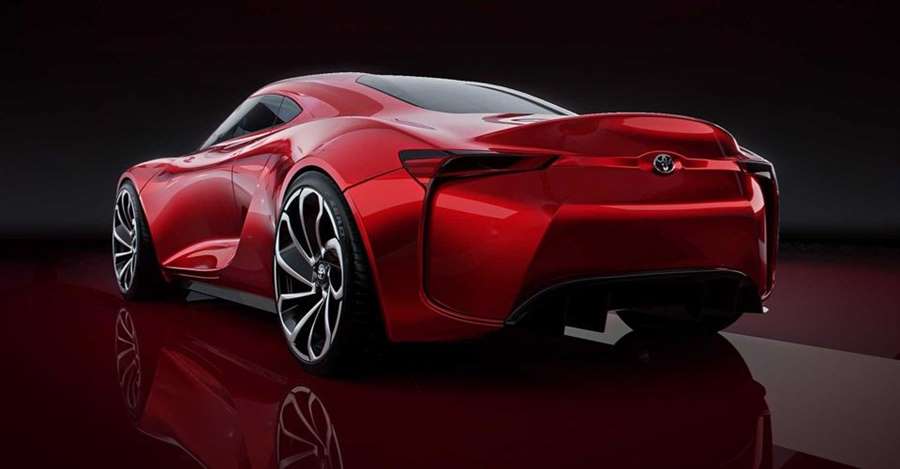
The pressing focal point for the designing wizards is to deliver an agile sports car with an emphasis on giving it a modern, sleek, and futuristic makeover. Clean and curved edges will not only enhance its flamboyant features but also be in tune with the operation of the law of aerodynamics. The first look of the revamped version of MR2 rendered digitally based on the archetypal model features a lightweight, dynamic, and easy to steer machine. Further, judging by the rumblings going on for quite a while now, we reckon that it will make a comeback with either an entirely electric or hybrid power train.
Besides that, one can expect a lot of improvements and sophistication in terms of elimination of the mishaps, as noted in the third generation W30 model. There are some wicked renders out there for all our favorite cars, and the MR2’s iconic status makes it one of those cars that have several renders available online.
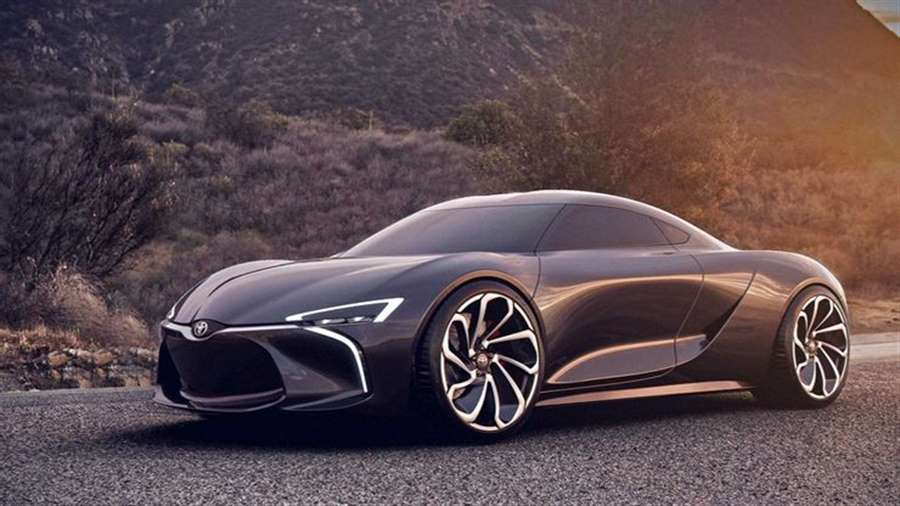
Even though the idea of reuniting the brands' '90s marquees, namely: the Celica, Supra, and MR2 have just made it to the discussion phase, there are talks in the town that Mr. Akio Toyoda would love to see the three sisters of the yesteryear make a comeback. Toyota has already launched GR Supra and the GT86 in the recent past which can be the replacement for the reconditioned versions of the erstwhile Supra and Celica, respectively.
The past releases hint towards future prospects that Toyota plans to do the same with MR2. Further, just as it collaborated with Subaru and BMW for the production of the 86 and Supra, there may be a probability that another such affiliation may already be in the pipelines.
Since the company is at the forefront to explore the electric car divisions, it may do so by introducing a full-fledged electric-powered prototype. An electric engine sounds fascinating for it would lead to an increase in peak performance measured in terms of horsepower. Drivers can expect an increase in the swiftness and acceleration of the car because of a lower center of gravity because of placing electric batteries under the floor.
All the models launched by Toyota to date, including the more recent ones like 86 and 2.0 Supra coupes, have been able to generate a maximum horsepower of 205 and 255 respectively. We expect the MR2 to glide this number up high to around 300+ HP. Moreover, in case Mr. Toyoda resolves to go for the same he may also have to possibly consider a long-term affiliation with Panasonic since at present it is the leading producer of EV batteries.
The most recent reports of the automobile industry suggest that the day is not far when Toyota will be power-packed to launch a fresh chapter of the MR2.
Source: hotcars.com
2022 Toyota Tundra: What We Know About the Next One
Will the next full-size Tundra pickup truly challenge the likes of the Ford F-150 and Ram 1500?
UPDATE: We've included exclusive MotorTrend renders based on leaks and various prototypes running around, showing aggressive front bumper and cutaways underneath the headlights. It should prove to be an interesting, bold evolution of the sort of styling Toyota has been exploring in its TRD Pro models, albeit much more extreme.
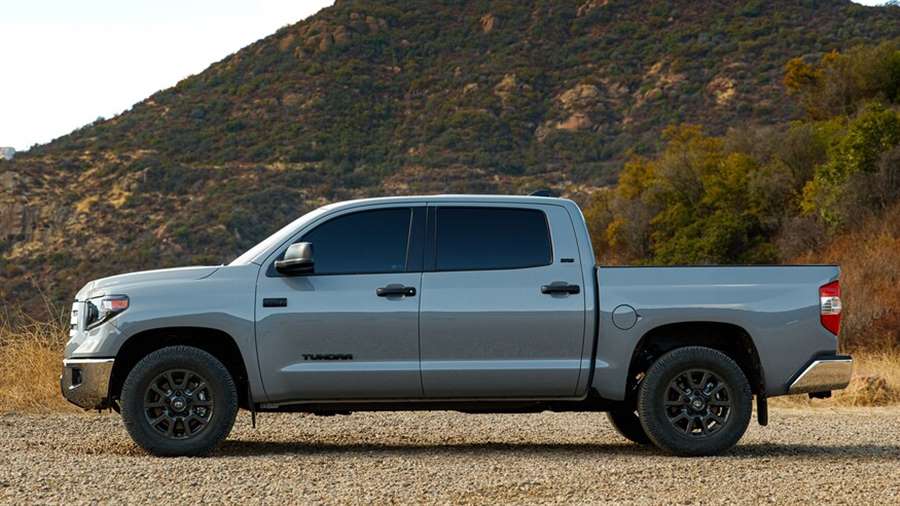
The current Toyota Tundra impressed us enough to earn the MotorTrend Truck of the Year award…in 2008. Since then, the Japanese automaker has merely put coats of lipstick on its aging pickup while rivals such as the Chevrolet Silverado, Ford F-150, GMC Sierra, and Ram 1500 received at least one full-on redesign. In other words, the Tundra's been left in the dust. However, Toyota finally is doing something about it.
The 2022 Toyota Tundra is due to ride on the company's latest truck chassis. Reportedly coined Toyota New Global Architecture-F (or TNGA-F), the Tundra's body-on-frame underpinnings ought to benefit from greater use of high-strength steel and other weight-saving materials. Like the Ram 1500, we anticipate the next-gen Tundra will adopt coil springs—in place of the current truck's leaf springs—to go with its live rear axle. Such a setup will surely improve the truck's ride quality. Likewise, we expect the lither 2022 Tundra to notably improve upon the outgoing model's maximum 1,730-pound payload and 10,200-pound towing figures. Of course, it will have to, with more-modern light-duty competitors offering capacities that far outstrip those dated numbers.
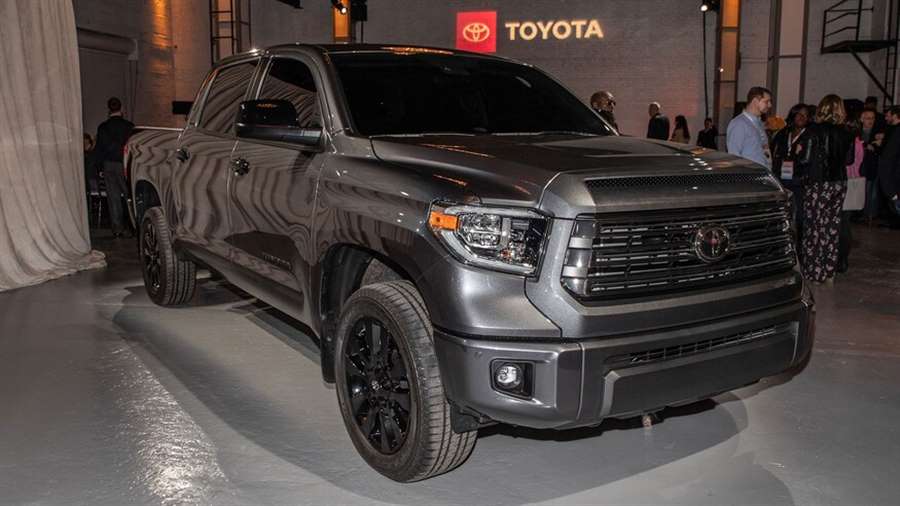
Say goodbye to the Tundra's V-8 engines, because Toyota's big pickup will reportedly enter the world with a V-6-only powertrain lineup. Look for higher-end Tundra variants to utilize a variant of the 416-hp 3.4-liter unit found under the hood of the Lexus LS500. Lesser Tundras will likely employ the naturally aspirated 278-hp 3.5-liter V-6 engine of the Tacoma (possibly massaged to produce more than 300 horses).
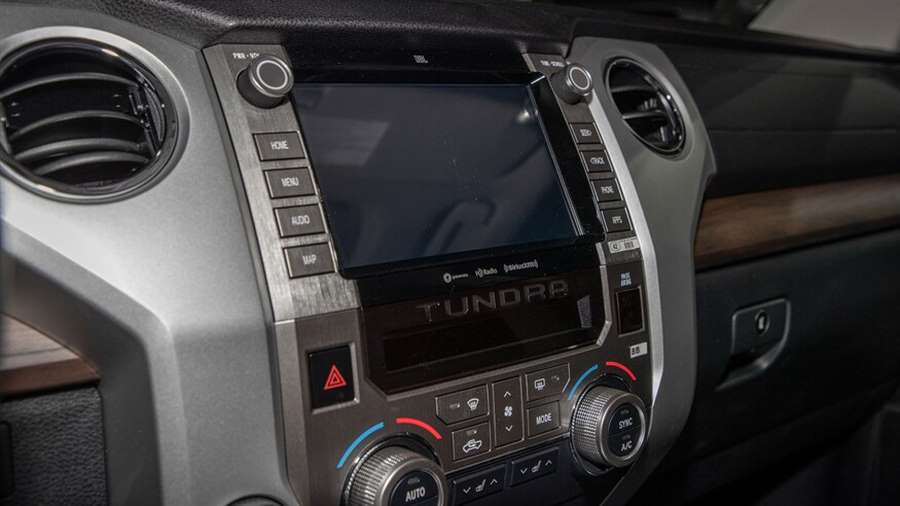
Given Toyota's hybrid history, the brand may offer the 2022 Tundra with a gasoline-electric hybrid powertrain option, putting it on the vanguard in a segment that is just now warming up to electrification. Such a setup will allow the Toyota truck to properly compete with the 2021 Ford F-150 and its available hybrid powertrain.
2022 Toyota Tundra's Truck-Like Looks
Despite its relatively radical mechanical changes, the 2022 Toyota Tundra is anticipated to evolve upon the styling of today's truck. That's no bad thing, as the current Tundra has finally grown into its skin—the original version looked like a four-wheeled fish of some sort—and comes across as innocuous enough, if not fully handsome. Still, look for the big Toyota truck to sport a brasher front-end design incorporating a large grille and tall hood, providing the new Tundra with a flashier mug.
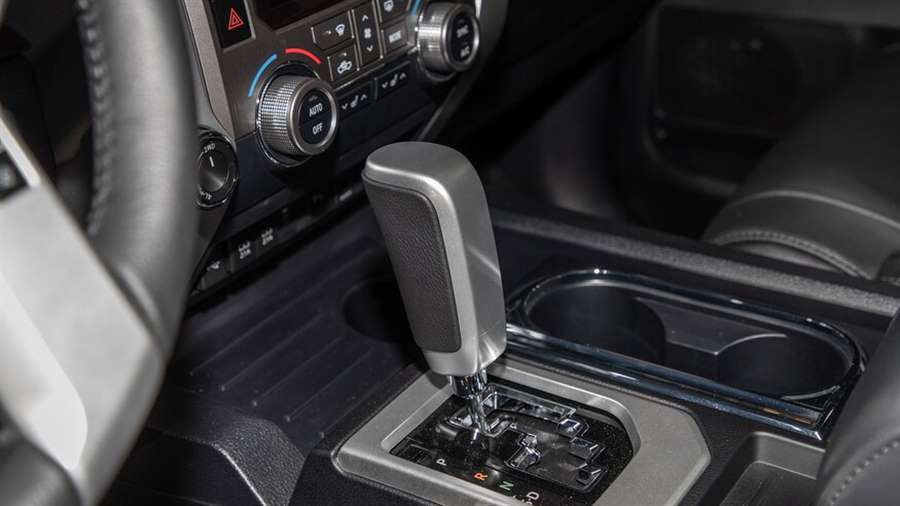
Inside, the new Tundra will welcome Toyota's latest Entune infotainment technology. This includes an available 12.0-inch touchscreen infotainment system and a large head-up display unit. Toyota's full Safety Sense suite of goodies are sure to be available, too, including automatic braking, advanced radar cruise control, automatic lane centering and lane-keep assist, and much more.
2022 Toyota Tundra On-Sale Date And Price
Although we expect Toyota to unveil the 2022 Tundra before the middle of next year, we don't anticipate the model rolling forth from Toyota's San Antonio, Texas, factory and reaching dealerships until the end of 2021. When it arrives, the 2022 Tundra may sport a base price close to that of the current truck's approximately $35,000 figure, or the brand might reintroduce lower, less-equipment-rich trim levels to the lineup in an attempt to capture fleet or entry-level buyers.
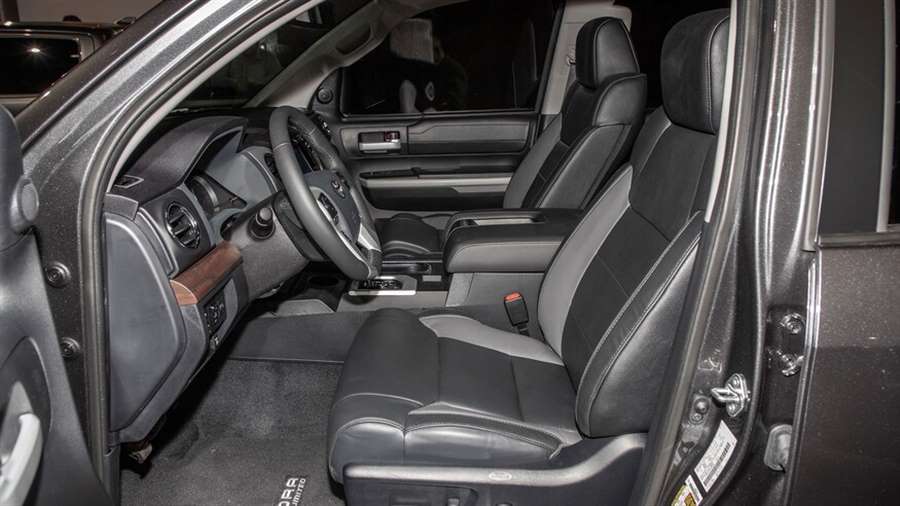
No matter what, opting for four-wheel drive, more technology, a larger cab or bed, and more powerful or advanced powertrain options will raise the truck's cost. Plan to spend north of $55,000 to get into the 2022 Tundra's pricier trims.
Source: motortrend.com
2021 Toyota Mirai Makes a Stylish Play for a Hydrogen Future
Toyota's redesigned Mirai hydrogen fuel-cell sedan brings handsome design and 400 miles of range—but only to those who live in California.
In the 1990s, Apple Computer appeared doomed as its market share dwindled and developers abandoned its platform. At the time, Microsoft's Windows could run pretty much anything, whereas Macs were known for running a few applications and games. Even though the Mac had a rabid following, the question emerged: Why buy a Mac when it doesn't run everything?
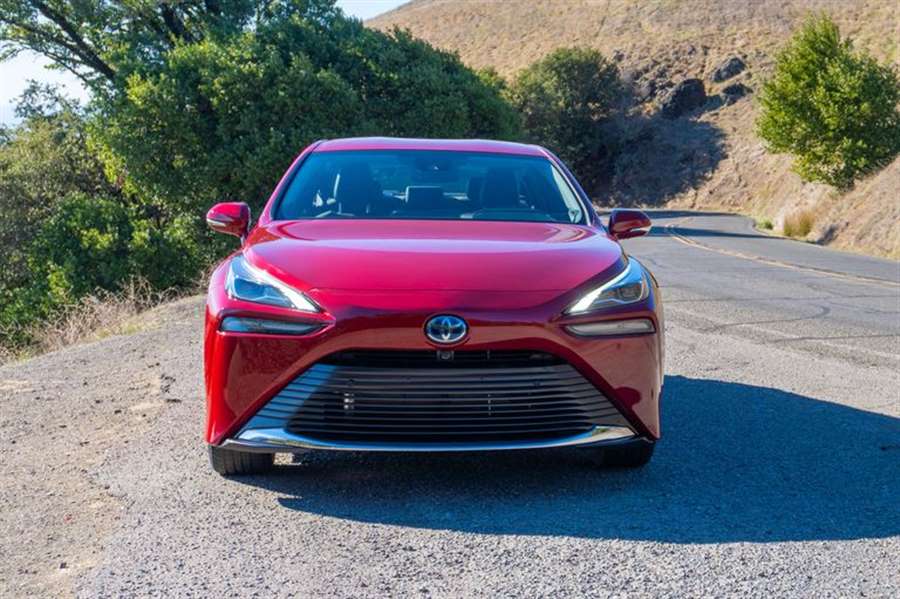
Toyota finds itself in similar situation with its comprehensively redesigned 2021 Mirai hydrogen fuel-cell vehicle. Although the new car impresses as a stylish touring sedan, limited hydrogen-fueling infrastructure in the United States means California is the only American market where it will be sold. In other words, why buy a car that can't be driven everywhere?
The 2021 Mirai starts at $50,455—some $9090 cheaper than its predecessor—and rides on Toyota's GA-L platform. With an electric drivetrain powered by a hydrogen fuel cell, drivers get the dual benefits of a zero-emissions vehicle with a conveniently short refueling time similar to a traditional internal-combustion powertrain—provided you can find a hydrogen station. Under the hood of this freshly designed four-door is a smaller and more efficient fuel-cell stack that generates 172 horsepower, which is an increase of 19 horses over the first-generation Mirai. Range is up 30 percent to a quoted 402 miles on the base XLE model. The range increase is due partially to the new Mirai's three cylindrical hydrogen tanks (one more than before) situated under the cabin and trunk that can hold 5.6 kilograms of hydrogen when compressed at 10,000 psi, which is 12 percent more capacity than before. Working together with the fuel cell is a 1.2-kWh lithium-ion battery to power a 182-hp electric motor that sits behind the rear seats.
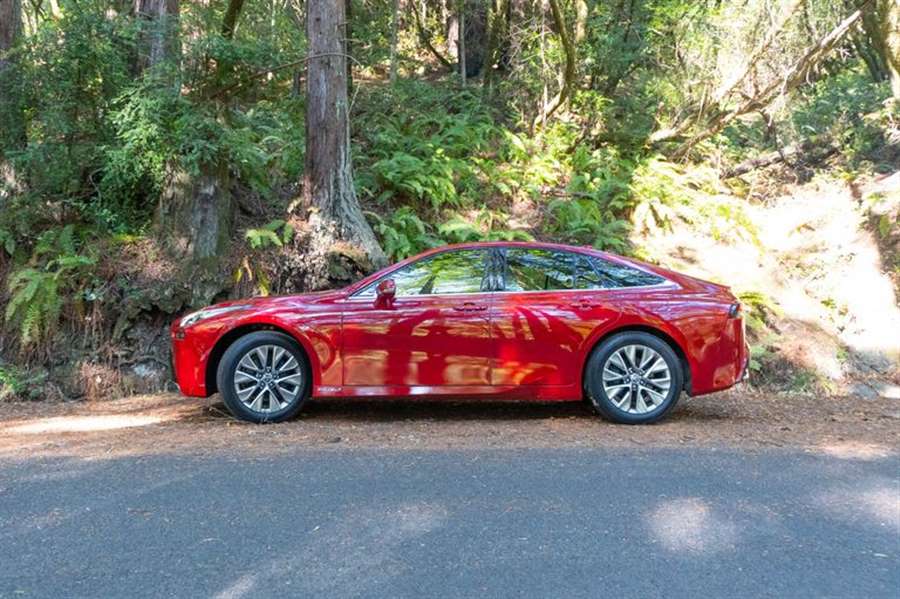
The result is a rear-wheel-drive vehicle with a nearly 50/50 front-to-rear weight distribution, which is something the previous front-wheel-drive model couldn't claim. Toyota's reasoning for the switch from front- to rear-drive boils down to more efficient packaging of the updated fuel cell in the new chassis. We'd say it was a good move, as the Mirai is surprisingly enjoyable to drive. Its well-balanced chassis feels refined and composed. The previous car's strut-type front and torsion-beam rear suspension have been replaced by multilink arrangements fore and aft, which soaked up most of the ruts and bumps we encountered on the mountain roads of Northern California. The bulk of the hydrogen tanks and battery do make the Mirai feel heavy in corners, but not enough to make it unwieldy. Jabs of the accelerator produce a quick hit of force that will be familiar to anyone who's driven a conventional EV. However, with the electric motor's 221 pound-feet of torque tasked with moving about 4300 pounds of Toyota, the run to 60 mph is a lazy one at an expected 9.1 seconds.

The Mirai's premium feel on the road does seep into its relatively spacious five-seat cabin, although some elements of the interior are not quite up to the standard we'd expect to find in a $50K-and-up vehicle. For example, its front seats are comfortable and supportive, but the quality of Toyota's SofTex synthetic leather upholstery looks cheaper than it should. Some drivers will find it a stretch to reach the climate controls, thanks to the swooping design accent across the Mirai's dash. And while the standard 12.3-inch touchscreen for Toyota's Entune infotainment system supports Amazon Alexa, Android Auto, and Apple CarPlay connectivity, the system is not as attractive nor as intuitive as we'd like.
Unlike the ungainly first-gen model, the new Mirai makes its best impression from the outside. Its long hood, sleek greenhouse, and clean body lines all work to give it presence as arguably the best-looking Toyota sedan. Whether its sharp styling was conscious decision to help lure potential buyers into a hydrogen-powered future is up for debate, but it certainly should draw eyes in Toyota showrooms, at least those in the Golden State.
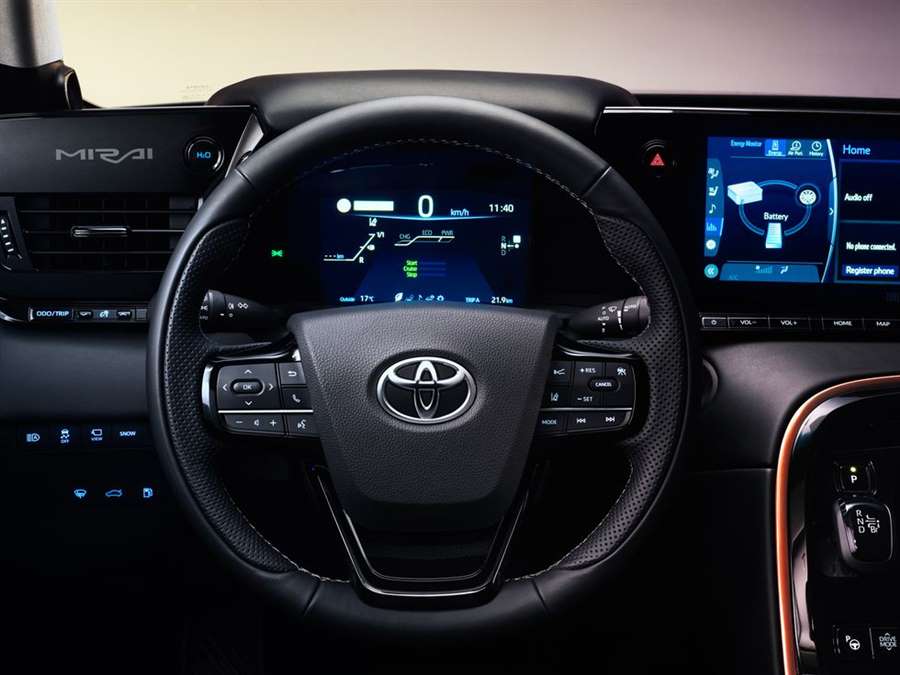
And that's the Mirai's Achilles' heel: Its goodness is trapped in a geographic area. Without plentiful hydrogen stations, even the new car's increased range matters little outside of California. Toyota has and still relies on outside sources to establish a hydrogen infrastructure in the U.S., which leaves the Mirai's future largely to the whims of corporations and government bureaucracy.
The stylish iMac computer eventually helped Apple turn itself around after nearly declaring bankruptcy. It sold more computers, wooed developers to its operating system, and eventually introduced the money-printing iPhone. Apple made sure that the style it sold was supported by the right technology, which helped it blossom into the powerhouse that is today. Hydrogen vehicles have yet to achieve a similar cult status, but Toyota's much-improved Mirai is a compelling step in the right direction.
Source: caranddriver.com

